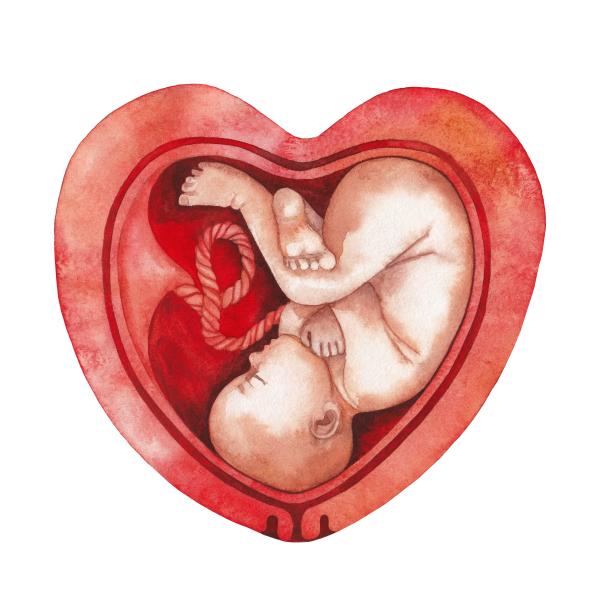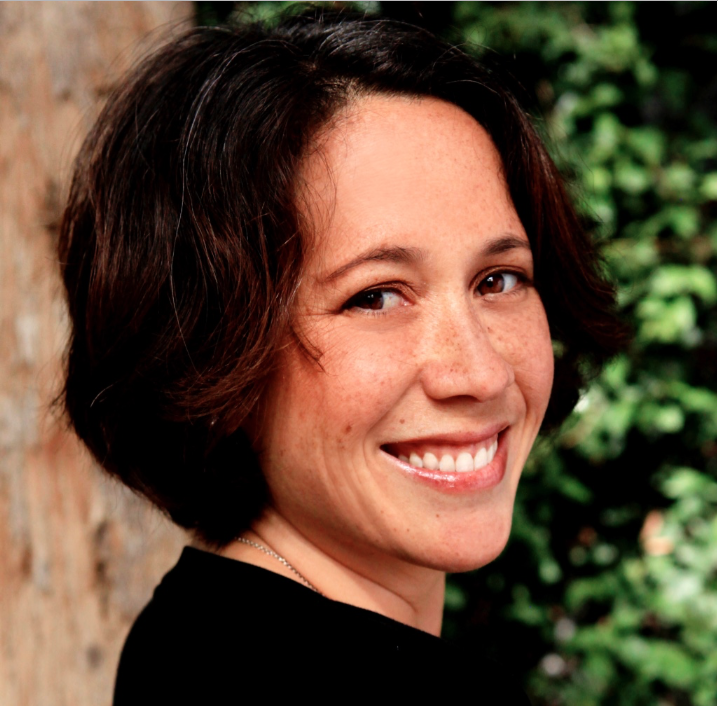
Welcome to the conclusion of our three part series discussing the science behind director Kathleen Gyllenhaal's latest documentary, IN UTERO.
"To Avoid Adult Dysfunction Start 'IN UTERO'" took a deeper look at the health ramifications of toxic stress in prenatal life and its role in contributing to adult disease.
Part I of our Q&A with Gyllenhaal emphasized health, Hollywood, how a story gets told and the parallels between funding for film and scientific research. In Part II, we explore her insights into motherhood and the impact of her recent film.
What inspired you to do the IN UTERO documentary?
Kathleen:
I was trying to get pregnant, having some difficulties (2 miscarriages), and I wanted to understand more about conception and the prenatal period. I read a wonderful book called Origins by Annie Murphy Paul, along with a lot of other articles, which opened up the world of developmental origins of health and disease to me.
As I said before, I’ve always wanted to understand the cause of things. And since I was trying to embark on the biggest and most important journey of my life (becoming a mother), I wanted to understand everything I could about the relationship between a mother’s health and that of her growing fetus, so that I could lay a better foundation for conception and pregnancy.
So, I kept researching, and I kept seeing connections among all these different fields (epigenetics, epidemiology, psychology, neuroscience), and I thought, “This should be a documentary." And when I saw that there really wasn’t any other documentary out there (at least to my knowledge) that was bringing together all this research, I decided to do it.
What was your hypothesis going into the project and was it proven right or wrong?
Kathleen:
By the time I started reaching out to experts and lining up interviews, I was already pretty sure that a woman’s emotional state impacted the fetus. That was really the first springboard. And it was proven right.
Although it’s important to mention that daily stress is okay, it’s chronic stress that we’re talking about. Chronic stress brought on by a traumatic event, abuse, or ongoing economic stress, is what researchers are measuring.
It was the transgenerational piece that was new to me. I had a basic understanding of epigenetics — that the environment can switch our genes on or off, flying in the face of Darwin — but I didn’t put the pieces together until I was shooting, that changes in one lifetime are then passed down to the next generation until that gene is switched off.
How did being pregnant impact the project for you? Was your parenting changed as a result of the film?
Kathleen:
Well, I began to get really frustrated while I was learning about the effects of stress on pregnant women, because I was feeling the daily stress of making a feature film while I was carrying my baby. The irony wasn’t lost on me!
But I soon got over the frustration because I realized how fortunate I was to be learning this — I still had a chance to influence the pregnancy in a positive way. One of the last shoots we did was in Seattle, where there’s a group of “prenatal bonding” practitioners who have been trained by a German psychoanalyst named Gerhard Schroth, who was trained by Jenoe Raffai, a Hungarian psychoanalyst who developed the method. I would describe prenatal bonding as
part talk therapy, part mind-body relaxation therapy. I decided to try it out, because, well, why not? The idea is that you communicate with your baby by connecting with your body and literally talking out loud (or in your mind) to your baby.
I have to say, I never really felt I had a conversation with my baby, but I can definitely say that putting aside one hour a week to relax, commune with my belly, and start to put into the practice the kind of respectful, loving relationship I wanted to have with my child, was nothing but positive and worthwhile.
As for parenting, my husband and I consciously try to meet our son’s needs and stay closely attuned to him during these very early years, because we believe that it will help build his confidence (knowing he is loved), empower him, and encourage his independence as he gets older. In other words, we’re acknowledging his vulnerability and showering him with attention and love, hoping that he will then lead a life free of doubts or insecurities about being wanted or understood.
How did becoming a mother of a newborn, step parent and grandparent change your outlook, in general? And, with respect to the film?
Kathleen:
I became a mother later in life — I was 39 when I gave birth to my son. Prior to that, I became a step-grandmother when I married my husband (he has two grown children and two granddaughters). Being around these marvelous girls really got my maternal instincts going. I really believe they inspired my journey to motherhood.
How has this changed your professional outlook and world view, in general? How has it challenged your beliefs about motherhood before and after?
Kathleen:
I think my answer to that is, I always knew that mother/child relationships were complicated, and now I think I know why. We are so bonded to our mothers, we so want their unconditional love and approval, yet we can also be very critical of our mothers.
We still don’t understand exactly how the mother/fetus relationship informs these incredibly complicated and deep-seated dynamics. But we’re beginning to. And what I learned from making the film is that the baby is impacted by the mother’s anxiety, depression and stress. And if the mother is ambivalent about having a baby, some would say the baby gets that message too. So a very complex relationship emerges — some might describe it as co-dependent.
The child needs the mother to love him/her, because his/her survival depends on it. So it becomes very difficult to break away from the mother and truly become independent, even as a grown man or woman. I’m now referring to the section in the documentary which includes scenes from The Matrix. People might think it’s pretty “far out”, since it deals heavily with the unconscious. I find it really strikes a chord with people who are trying to unravel their own complicated relationships.
What do you wish motherhood looked like in 2016?
Kathleen:
Globally? I can’t really speak to specifics, because there are so many extenuating circumstances that have to do with culture, economy, etc. But I will say that, generally, I’d love to see motherhood honored and supported around the world. I’d love to see mothers viewed as heroes, which they are.
And I want to spread the message that we need to make this world a better place for our mothers-to-be, so that they are calm and at peace during their pregnancy, which means we will then have calm and peaceful children born into the world. That’s the only way the world will change for the better. And as for the U.S., we need paid family leave. Period. It’s deplorable that we’re the only industrialized nation in the world that doesn’t have it.
In our current media age certain falsehoods spread like wildfire when championed by a famous person. Money, time, public opinion and policy can get diverted away from important research when these situations arise. How can scientists and physicians compete with that megaphone? What do you think Hollywood does right about messaging that the medical and scientific community could take lessons from?
Kathleen:
Hmmm. I think Hollywood is good at addressing people’s emotions. I think science needs to be more compassionate. Look at the bigger picture. And dare to be a pioneer, maybe even get political. It’s also important to note that the general public is well-informed. They know there are lots of problems with the way we do things. People want answers. People crave a moral authority. How far is the scientific community willing to go? Are they willing to take a stance on how we as a society have to change in order to make our food safer to eat, the air safer to breathe, and the planet self-sustainable?
As a filmmaker or professional story teller, what are the key elements to impactful messaging and communication?
Kathleen:
Being true to yourself, to the story you’re trying to tell, or message you’re trying to deliver. Being as uncompromising as you can until you have to compromise, because you will have to compromise. Being humble, knowing that you’re only a conduit for the message. It’s not about you, it’s about people.
As a filmmaker, it’s important to collaborate with other artists who are talented in ways you are not, and to celebrate their talent. The film just gets better that way. You also have to be willing to go the distance, since it’s actually after the film gets made that the real hard part begins: getting it out into the world.
And, sometimes, you have to be willing to make little to no money. When you get right down to it, after you calculate the many hours you put into making the film and distributing it (In Utero has taken 4 years), you realize you’re really a kind of volunteer or underpaid social worker — or an artist. And that’s okay, because art and knowledge is not about money. It’s about understanding us, and the world we live in.
Source:

Kathleen Man Gyllenhaal was born and raised on Oahu, Hawaii and currently lives in Los Angeles. She is the writer/director of a diverse body of award-winning dramas and documentaries, including Beauty Mark, a social documentary exploring America’s obsession with body image, perfection and success, and Sita, a Girl from Jambu, an ethnographic drama about child sex trafficking in Nepal. Kathleen taught at the University of Colorado-Boulder, then Vassar College, where she obtained tenure. From there, she transitioned to Hollywood, co-producing the feature film Grassroots, starring Jason Biggs, Cedric the Entertainer and Lauren Ambrose, released by Samuel Goldwyn Films. Kathleen wrote and directed the award-winning Lychee Thieves, a multicultural tale set in Hawaii, which was an Academy Award qualifying live-action short. Her most recent film is the feature documentary In Utero, which explores the impact of the environment on pregnancy and the next generation.



